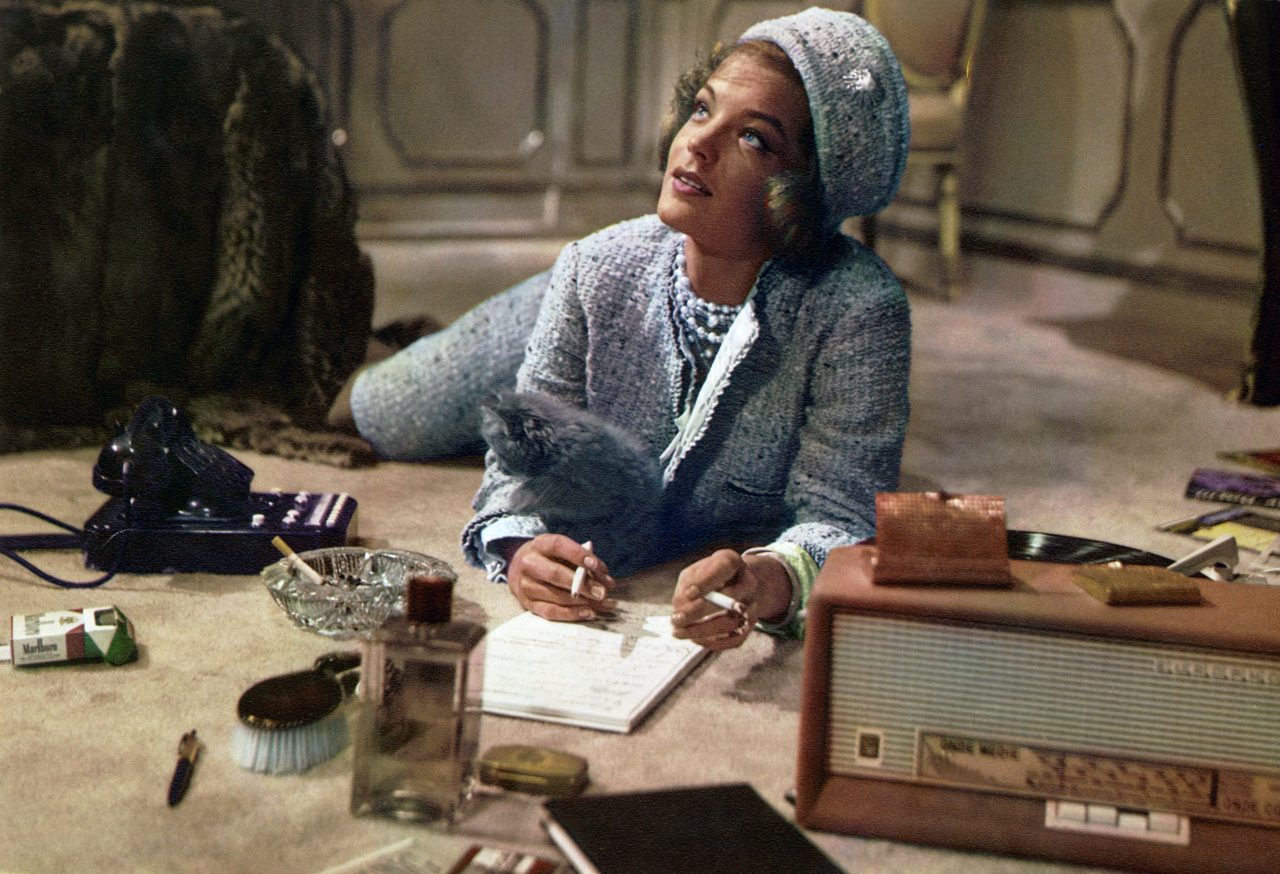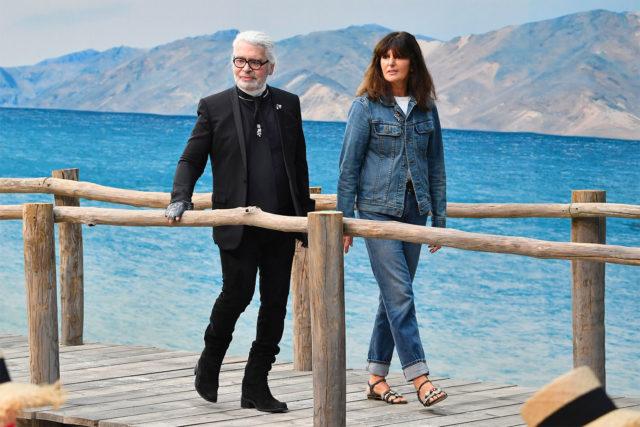The Chanel show set, in Paris’s soaring Grand Palais, spelled the brand’s name in giant letters, evoking the iconic Hollywood sign in the Santa Monica mountains.
Did this suggest that creative director Virginie Viard was thinking of the movies? “Less movies than actresses,” Viard explained, and particularly the modern life of actresses, from the high production values of the red carpet, to a staged off-duty look whilst getting a Starbucks in the certain knowledge that a paparazzo might be lurking in the parking lot, “the whole process!”
Meanwhile, the accompanying movie teasers, produced by Inez and Vinoodh, literally brought Paris to Tinseltown, with the Sacre Coeur nestled proudly in those Hollywood Hills—symbolic of Viard’s marriage of Parisian cool with laid-back, #WFH L.A. style.
The house of Chanel of course has a century-old relationship with actresses, as the recently opened exhibition “Gabrielle Chanel: Fashion Manifesto” at Paris’s dedicated fashion museum the Palais Galliera (intelligently curated by Miren Arzalluz) revealed. The exhibition subtly integrates a number of Chanel garments worn in private life and on-screen by some of the 20th century’s fabled actresses—including Grace Kelly, Delphine Seyrig, and Jeanne Moreau—as well as the voice of Marilyn Monroe, who when asked what she wore in bed famously answered “Chanel No. 5.”
Coco Chanel, who began her career as a performer singing saucy music hall songs, later made over a handful of actresses in her own image, just as she did with such beloved models in her in-house cabine as Marie-Hélène Arnaud and Jackie Rogers. The designer, for instance, transformed Romy Schneider into a baby-faced version of herself, and Luchino Visconti immortalized Schneider’s new look in his 1962 short movie Boccaccio 70. Chanel herself is even said to have found the new stage name for the Nouvelle Vague actress Anna Karina (née Hanne Karin Bayer). Viard, who has all these references at her fingertips, is also drawn to femme fatale Jeanne Moreau in Louis Malle’s 1958 Elevator to the Gallows, and she looked to some on-screen Chanel moments in her collection.
There was a whisper, for instance, of Alain Resnais’s highly stylized 1962 opus Last Year at Marienbad starring Delphine Seyrig, evoked in some fluttering black chiffon 1920s skirts and capes, worn with bead-frosted singlets. And the world of Jean Renoir’s 1939 The Rules of the Game inspired some pretty 1930s evening dresses in a Chanel document print which Viard had discovered from the same year that scattered the famous linked Cs amongst a field of gray blossoms. But Viard also used that satin print for a jumpsuit, because she was essentially evoking the real life wardrobes of contemporary actresses using her own cabine of models including many new French faces and the sophisticated Louise de Chevigny, (who, alongside Mika and Rianne, features in the Inez and Vinoodh movie clips). All of them were encouraged to do their actressy best on the runway.
The separates-based mix felt very Parisian girl cool—the sort of clothes that would appeal to hipster actresses Marion Cotillard and Anna Mouglalis, for instance, who were among the guests attending the in-person show, recognizable even behind the mandatory white masks that were distributed at the door.

Austrian-born German actress Romy Schneider on the set of Boccaccio '70 written and directed by Italian Federico Fellini, Luchino Visconti and Vittorio De Sica.
Photo: Sunset Boulevard/Corbis via Getty Images
This meant big-shouldered 1980s-looking Chanel suit jackets worn with petal pushers or stone-washed denim jeans or tiny miniskirts in candy pink or sky blue. Or an overscaled pale pink cardigan—traced with black piping that seemed hand-drawn—worn as a coat dress with a necklace that seemed assembled from cherished charms (and one of the metal linked C motif tiara headbands). Alongside those romantic black and white movie prints were overscale fluoro patterns printed on scarf silk that resembled graffiti but turned out on closer inspection to suggest neon-lit billboards advertising the latest epic by Coco or Chanel. There were even T-shirts with the old-fashioned countdown to a movie permanently frozen at five seconds.
“It felt like watching your very cool aunt or an extremely sassy, confident teenager,” noted playwright Jeremy O. Harris, “and I love how disparate those polarities are—so cool and great—and two women I want to be friends with and…want to be. Like, who doesn’t want to be Regina George?!”



